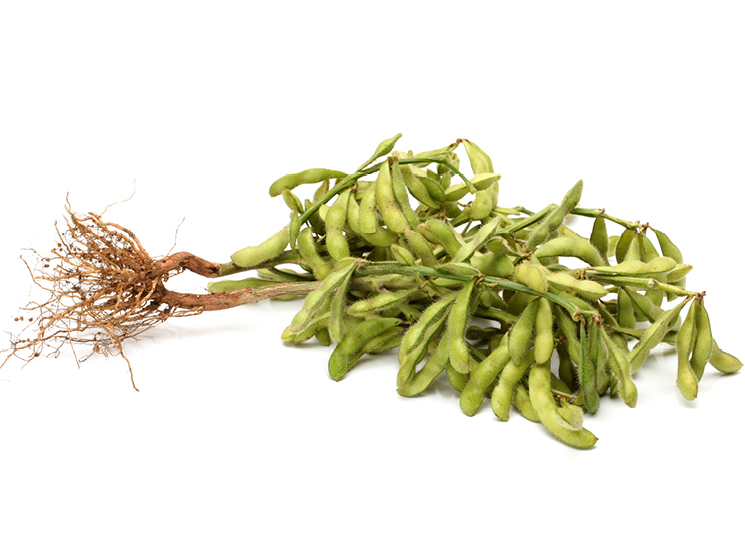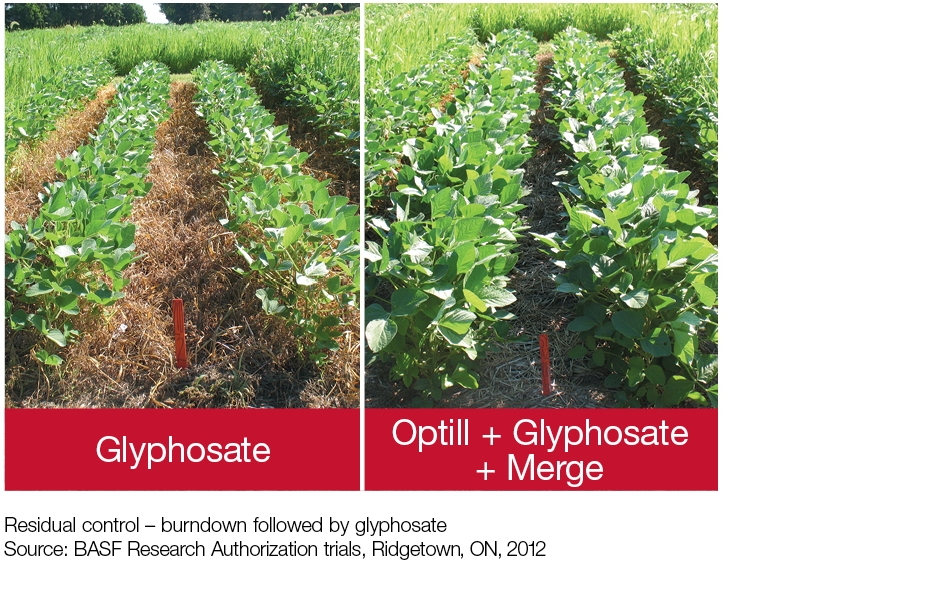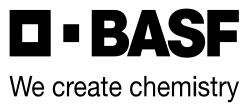Optill
Group 2 & Group 14
Optill herbicide tank-mixed with glyphosate, provides rapid burndown plus early season residual control for cleaner fields in glyphosate-tolerant soybeans.
- Powered by Kixor, for a fast, complete burndown.
- Residual activity keeps fields weed-free during early crop development.
- Multiple modes of action, to help prevent and manage resistant weeds.
Labels & SDS
6 AVAILABLE
Applicable On

Soybeans
Labels & SDS
Benefits of Optill
- The better weed control of Optill plus glyphosate has been shown to increase soybean yield by 2 to 3 bushels per acre, compared to using glyphosate alone.
- Optill uses Group 14 and Group 2 active ingredients that complement glyphosate to provide a faster, more complete burndown than glyphosate alone.
- The residual power in Optill is effective into early crop development allowing increased time and flexibility to apply a second, in-crop application of glyphosate.
Performance Trials
Weed control in soybeans with glyphosate versus Optill® plus glyphosate plus Merge®

Comparative control – 30 days after treatment

Keeping Field clean into the early season can increase yield

Product Info & Application Guide
Weed Management
Tank-mixed with glyphosate, Optill complements control of all weeds on the glyphosate label in addition to the following weeds.
Weed Class |
List of Weeds |
|---|---|
Broadleaf Weeds |
Broadleaf plantain |
Grasses |
Barnyard grass4 |
1 Adequate residual control may not be achieved on Group 2-resistant biotypes.
2 Includes control of triazine-resistant biotypes.
3 Burndown only.
4 Burndown and residual suppression only.
5 Suppression only.
6 Includes control of glyphosate-resistant biotypes.
7 Top growth only.
8 Top growth burndown only.
Application Tips
- Flat fan or similar spray nozzles should be used for application
- Water Volume should be between 40 - 80 L/ac (100 - 200 L/ha)
- Denser weed infestation requires the use of higher water volumes
- Recommended pressure is 275 kPa
- Rainfastness – 3 hours after application
- Residual pre-plant applications of Optill must be activated by at least ½ inch of rainfall or sprinkler irrigation prior to weed seedling emergence
When to Apply
Crop |
Timing |
|---|---|
Soybeans |
pre-plant surface application pre-emergence |
How Much to Apply
One case will treat 120 acres. Optill is tank mixed with glyphosate for application at the following rates:
Timing |
Application Rates |
|
|---|---|---|
Early Pre-plant |
Optill herbicide + glyphosate* Water volume Merge adjuvant** |
60 g/ac (147 g/ha) 40 - 80 L/ac (100 - 200 L/ha) 0.40 L/ac (1 L/ha) |
* See glyphosate label for application rates.
**Addition of Merge adjuvant (not included) is required for optimum activity.
Follow Crops
Following an application of Optill, the crops listed can be planted in the season indicated.
Same Season (in case of crop failure1) |
Soybeans, Winter wheat2 |
Next Season |
Barley (spring), Corn (field), Dry beans, Soybeans, Wheat (spring, winter) |
1 A second application of Optill cannot be made in the rescue crop.
2 Winter wheat may be re-planted in cases of crop failure or as a rotational crop 100 days following an Optill application. Soil preparation for re-planting should be no deeper than 10 cm.


